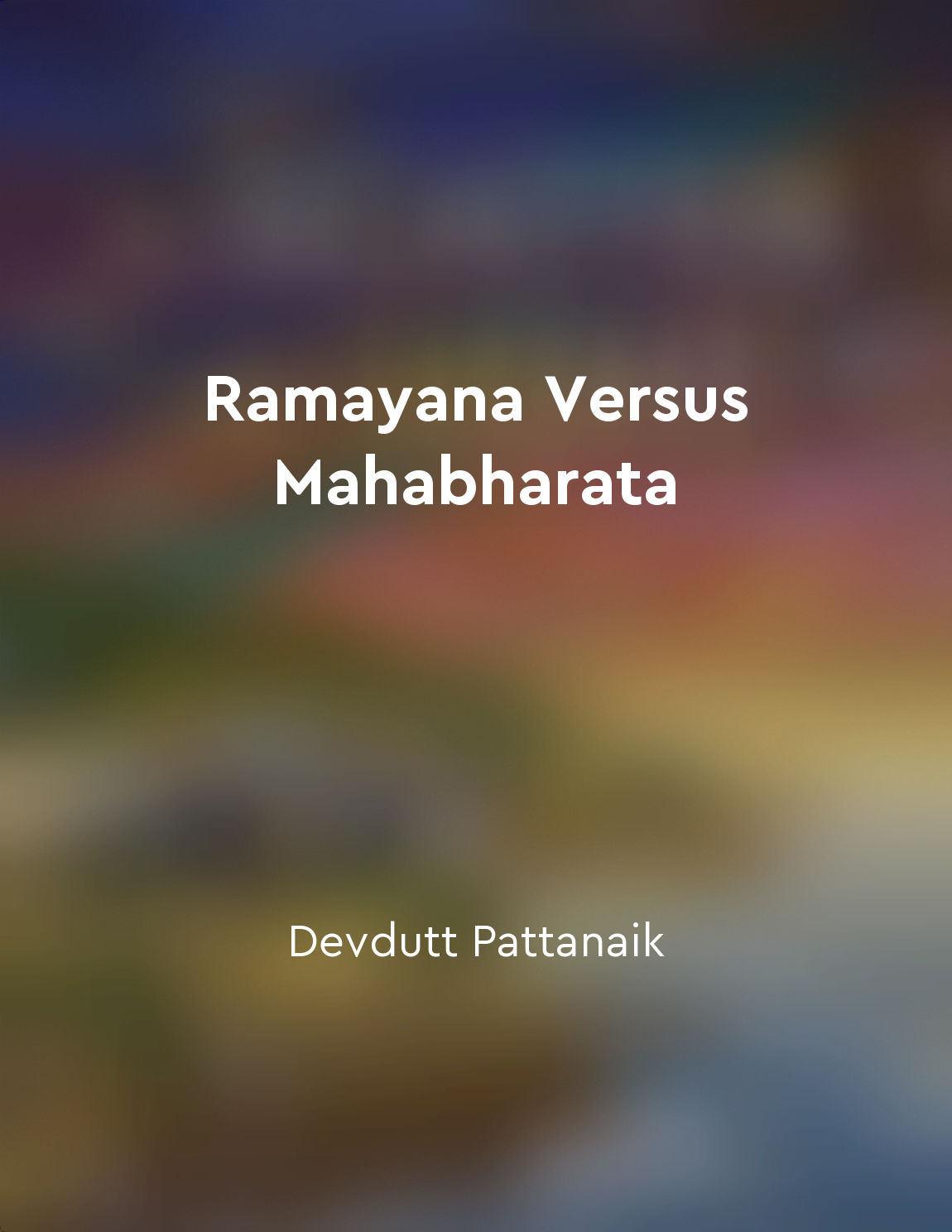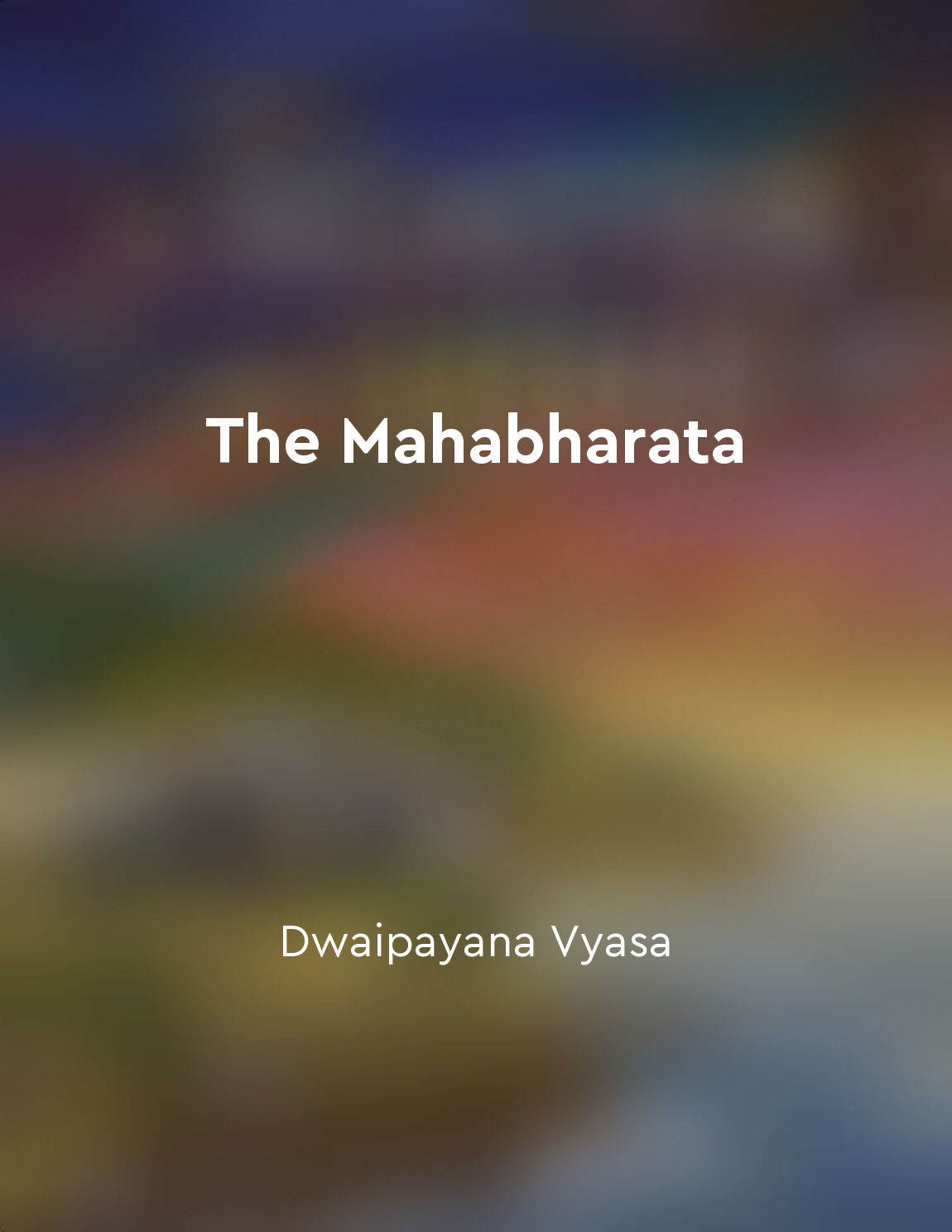Ramayana focuses on individual quest, Mahabharata examines collective duty from "summary" of Ramayana Versus Mahabharata by Devdutt Pattanaik
The Ramayana and Mahabharata are two ancient Indian epics that have captured the hearts and minds of people for centuries. These texts delve into the complexities of human nature and explore the intricacies of life through their rich narratives. One of the key distinctions between the two epics lies in their thematic focus. The Ramayana primarily revolves around an individual quest, while the Mahabharata is centered around collective duty. In the Ramayana, the protagonist Rama embarks on a journey to rescue his wife Sita from the demon king Ravana. His quest is driven by his personal duty to uphold righteousness and fulfill his role as a prince and husband. Throughout the epic, Rama demonstrates unwavering devotion to his dharma, or duty, even in the face of immense challenges and moral dilemmas. The Ramayana thus highlights the importance of individual responsibility and the pursuit of one's personal values and beliefs. On the other hand, the Mahabharata delves into the complexities of collective duty and societal obligations. The epic follows the struggles of the Pandavas, a group of five brothers who must navigate a web of familial relationships, political alliances, and moral dilemmas. The Mahabharata raises profound questions about the nature of duty, loyalty, and justice in a world fraught with competing interests and conflicting values. Through the characters of the Pandavas and Kauravas, the epic explores the consequences of individual actions on a collective scale. While both epics offer valuable insights into the human experience, the Ramayana and Mahabharata approach these themes from different perspectives. The Ramayana emphasizes the importance of personal integrity and moral steadfastness in the face of adversity, while the Mahabharata underscores the significance of fulfilling one's obligations to family, society, and the greater good. By examining these contrasting themes, readers gain a deeper understanding of the complexities of human nature and the intricate web of relationships that shape our lives.Similar Posts
Vibhishana's allegiance to Rama
When Ravana's younger brother, Vibhishana, approached Rama seeking refuge, the Vanara warriors were suspicious. After all, Vibh...
Prince Rama
Prince Rama, the protagonist of the epic Ramayan, is considered an ideal man, embodying qualities such as righteousness, loyalt...

Ramayana's Ravana is demon king, Mahabharata's Dhritarashtra is blind king
In the Indian epic Ramayana, Ravana is portrayed as a powerful demon king who rules over the kingdom of Lanka. He is depicted a...

Ramayana focuses on individual quest, Mahabharata examines collective duty
The Ramayana and Mahabharata are two ancient Indian epics that have captured the hearts and minds of people for centuries. Thes...

The game of dice
In the great epic Mahabharata, the game of dice plays a critical role in shaping the destiny of the Pandavas, the noble and vir...
Divine intervention
The Ramayan tells the story of the divine prince Rama, who is exiled from his kingdom and embarks on a journey with his loyal b...
